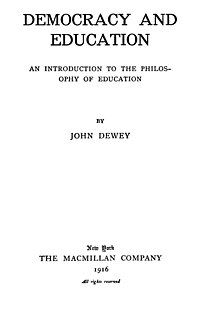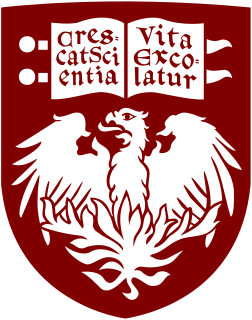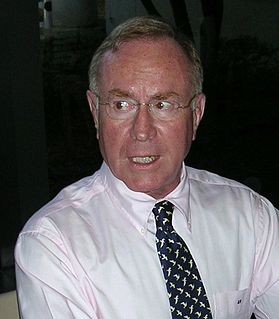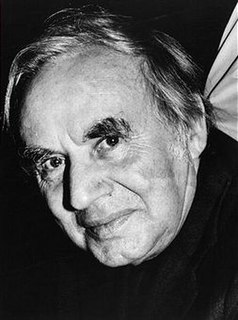
Edward Teller was a Hungarian-American theoretical physicist who is known colloquially as "the father of the hydrogen bomb", although he did not care for the title. He made numerous contributions to nuclear and molecular physics, spectroscopy, and surface physics. His extension of Enrico Fermi's theory of beta decay, in the form of Gamow–Teller transitions, provided an important stepping stone in its application, while the Jahn–Teller effect and the Brunauer–Emmett–Teller (BET) theory have retained their original formulation and are still mainstays in physics and chemistry. Teller also made contributions to Thomas–Fermi theory, the precursor of density functional theory, a standard modern tool in the quantum mechanical treatment of complex molecules. In 1953, along with Nicholas Metropolis, Arianna Rosenbluth, Marshall Rosenbluth, and his wife Augusta Teller, Teller co-authored a paper that is a standard starting point for the applications of the Monte Carlo method to statistical mechanics. Throughout his life, Teller was known both for his scientific ability and for his difficult interpersonal relations and volatile personality.

Los Alamos National Laboratory is a United States Department of Energy national laboratory initially organized during World War II for the design of nuclear weapons as part of the Manhattan Project. It is located a short distance northwest of Santa Fe, New Mexico in the southwestern United States.

Julius Robert Oppenheimer was an American theoretical physicist and professor of physics at the University of California, Berkeley. Oppenheimer was the wartime head of the Los Alamos Laboratory and is among those who are credited with being the "father of the atomic bomb" for their role in the Manhattan Project, the World War II undertaking that developed the first nuclear weapons. The first atomic bomb was successfully detonated on July 16, 1945, in the Trinity test in New Mexico. Oppenheimer later remarked that it brought to mind words from the Bhagavad Gita: "Now I am become Death, the destroyer of worlds." In August 1945, the weapons were used in the atomic bombings of Hiroshima and Nagasaki.

The United States Atomic Energy Commission, commonly known as the AEC, was an agency of the United States government established after World War II by U.S. Congress to foster and control the peacetime development of atomic science and technology. President Harry S. Truman signed the McMahon/Atomic Energy Act on August 1, 1946, transferring the control of atomic energy from military to civilian hands, effective on January 1, 1947. This shift gave the members of the AEC complete control of the plants, laboratories, equipment, and personnel assembled during the war to produce the atomic bomb.
The Federation of American Scientists (FAS) is a 501(c)(3) organization with the stated intent of using science and scientific analysis to attempt to make the world more secure. FAS was founded in 1945 by scientists who worked on the Manhattan Project to develop the first atomic bombs. The Federation of American Scientists also aims to reduce the amount of nuclear weapons that are in use, and prevent nuclear and radiological terrorism. They hope to present high standards for nuclear energy’s safety and security, illuminate government secrecy practices, as well as track and eliminate the global illicit trade of conventional, nuclear, biological and chemical weapons. With 100 sponsors, the Federation of American Scientists claims that it promotes a safer and more secure world by developing and advancing solutions to important science and technology security policy problems by educating the public and policy makers, and promoting transparency through research and analysis to maximize impact on policy. FAS projects are organized in three main programs: nuclear security, government secrecy, and biosecurity. FAS played a role in the control of atomic energy and weapons, as well as better international monitoring of atomic activities.

Tube Alloys was the code name of the research and development programme authorised by the United Kingdom, with participation from Canada, to develop nuclear weapons during the Second World War. Starting before the Manhattan Project in the United States, the British efforts were kept classified, and as such had to be referred to by code even within the highest circles of government.

James Leslie Tuck OBE, was a British physicist. He was born in Manchester, England, and educated at the Victoria University of Manchester. Because of his involvement with the Manhattan Project, he was unable to submit his thesis on time and never received his doctoral degree.

The Interim Committee was a secret high-level group created in May 1945 by United States Secretary of War, Henry L. Stimson at the urging of leaders of the Manhattan Project and with the approval of President Harry S. Truman to advise on matters pertaining to nuclear energy. Composed of prominent political, scientific and industrial figures, the Interim Committee had broad terms of reference which included advising the President on wartime controls and the release of information, and making recommendations on post-war controls and policies related to nuclear energy, including legislation. Its first duty was to advise on the manner in which nuclear weapons should be employed against Japan. Later, it advised on legislation for the control and regulation of nuclear energy. It was named "Interim" in anticipation of a permanent body that would later replace it after the war, where the development of nuclear technology would be placed firmly under civilian control. The Atomic Energy Commission was enacted in 1946 to serve this function.
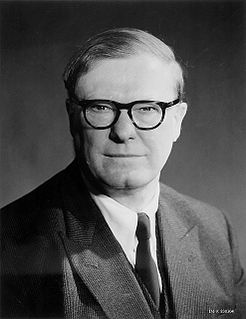
William George Penney, Baron Penney, was an English mathematician and professor of mathematical physics at the Imperial College London and later the rector of Imperial College. He is acknowledged as having had a leading role in the development of Britain's nuclear programme, a clandestine programme started in 1942 during World War II which produced the first British atomic bomb in 1952.

Atomic spies or atom spies were people in the United States, Great Britain, and Canada who are known to have illicitly given information about nuclear weapons production or design to the Soviet Union during World War II and the early Cold War. Exactly what was given, and whether everyone on the list gave it, are still matters of some scholarly dispute. In some cases, some of the arrested suspects or government witnesses had given strong testimonies or confessions which they recanted later or said was fabricated. Their work constitutes the most publicly well-known and well-documented case of nuclear espionage in the history of nuclear weapons. At the same time, numerous nuclear scientists wanted to share the information with the world scientific community, but this proposal was firmly quashed by the United States government.
George A. Cowan was an American physical chemist, a businessman and philanthropist.

Siegfried S. Hecker is an American metallurgist and nuclear scientist. He served as Director of the Los Alamos National Laboratory from 1986 till 1997 and is now affiliated with Stanford University, where he is research professor emeritus in the Department of Management Science and Engineering in the School of Engineering, and senior fellow emeritus at the Freeman Spogli Institute for International Studies.
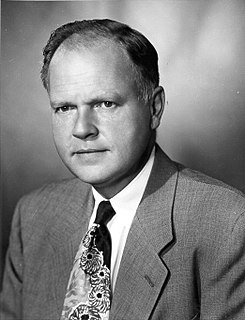
Alvin Cushman Graves was an American nuclear physicist who served at the Manhattan Project's Metallurgical Laboratory and the Los Alamos Laboratory during World War II. After the war, he became the head of J (Test) Division at Los Alamos, and was director or assistant director of numerous nuclear weapons tests during the 1940s and 1950s. Graves was badly injured in the 1946 laboratory criticality accident in Los Alamos that killed Louis Slotin, but recovered.
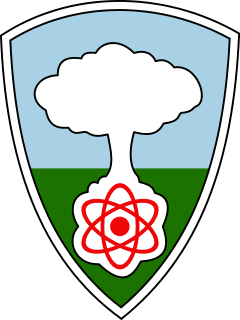
The Armed Forces Special Weapons Project (AFSWP) was a United States military agency responsible for those aspects of nuclear weapons remaining under military control after the Manhattan Project was succeeded by the Atomic Energy Commission on 1 January 1947. These responsibilities included the maintenance, storage, surveillance, security and handling of nuclear weapons, as well as supporting nuclear testing. The AFSWP was a joint organization, staffed by the United States Army, United States Navy and United States Air Force; its chief was supported by deputies from the other two services. Major General Leslie R. Groves, the former head of the Manhattan Project, was its first chief.

Myrtle Claire Bachelder was an American chemist and Women's Army Corps officer, who is noted for her secret work on the Manhattan Project atomic bomb program, and for the development of techniques in the chemistry of metals.

Harold Melvin Agnew was an American physicist, best known for having flown as a scientific observer on the Hiroshima bombing mission and, later, as the third director of the Los Alamos National Laboratory.
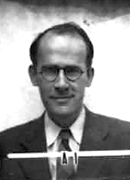
Robert Bigham Brode was an American physicist, who during World War II led the group at the Manhattan Project's Los Alamos laboratory that developed the fuses used in the atomic bombing of Hiroshima and Nagasaki.

Britain contributed to the Manhattan Project by helping initiate the effort to build the first atomic bombs in the United States during World War II, and helped carry it through to completion in August 1945 by supplying crucial expertise. Following the discovery of nuclear fission in uranium, scientists Rudolf Peierls and Otto Frisch at the University of Birmingham calculated, in March 1940, that the critical mass of a metallic sphere of pure uranium-235 was as little as 1 to 10 kilograms, and would explode with the power of thousands of tons of dynamite. The Frisch–Peierls memorandum prompted Britain to create an atomic bomb project, known as Tube Alloys. Mark Oliphant, an Australian physicist working in Britain, was instrumental in making the results of the British MAUD Report known in the United States in 1941 by a visit in person. Initially the British project was larger and more advanced, but after the United States entered the war, the American project soon outstripped and dwarfed its British counterpart. The British government then decided to shelve its own nuclear ambitions, and participate in the American project.
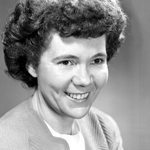
Jane Hamilton Hall was an American physicist. During World War II she worked on the Manhattan Project. After the war she remained at the Los Alamos National Laboratory, where she oversaw the construction and start up of the Clementine nuclear reactor. She became assistant director of the laboratory in 1958. She was secretary of the General Advisory Committee of the Atomic Energy Commission from 1956 until 1959, and was a member of the committee from 1966 to 1972.

